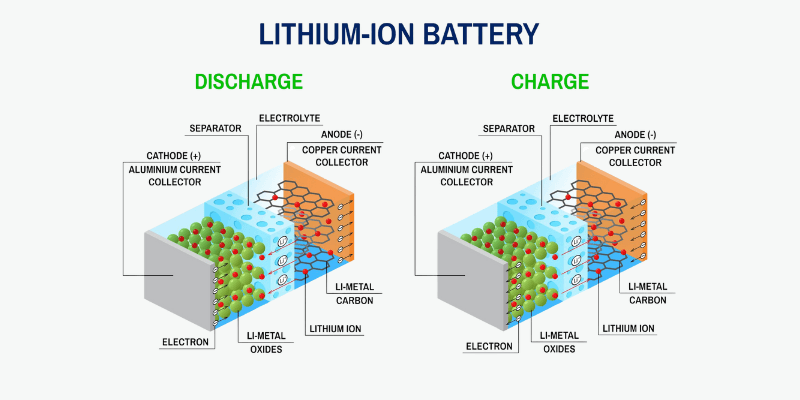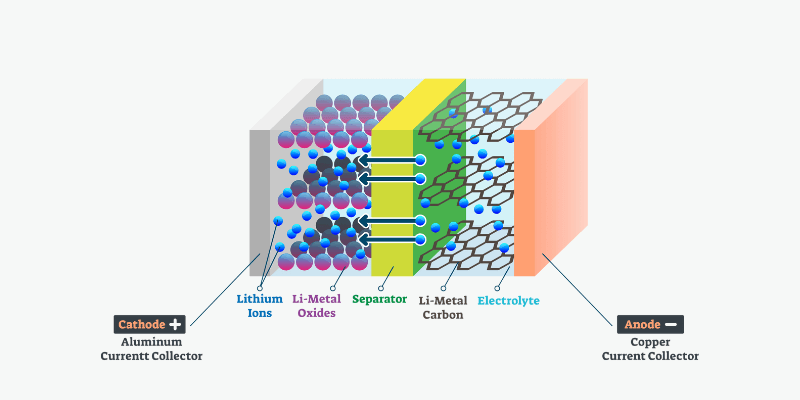Năng lượng pin hiện là phổ biến trong cuộc sống hàng ngày của chúng ta, từ điện thoại thông minh đến xe điện. Một thành phần pin chính là chất điện phân bên trong, giúp thiết bị của bạn chạy.
Hôm nay, chúng ta hãy khám phá những gì điện phân pin và cách thức hoạt động của nó.
Điện phân pin là gì?
Điện phân pin là chất vận chuyển các ion dương giữa pin hai điện cực, cho phép pin sạc và xả. Chất điện phân có thể là một chất lỏng hoặc giống như dán, tùy thuộc vào loại pin.
Làm thế nào để điện phân pin hoạt động?
Một pin có Ba thành phần chính: cực âm, cực dương và chất điện phân ngăn cách chúng. Các chất điện phân tạo điều kiện cho điện tích điện giữa thiết bị đầu cuối, làm cho các hóa chất để phản ứng và chuyển đổi năng lượng được lưu trữ thành điện có thể sử dụng cho các thiết bị được kết nối.

Các chất điện phân pin được làm bằng gì?
Pin khác nhau dựa vào các phản ứng hóa học và chất điện giải khác nhau. Pin axit chì sử dụng axit sunfuric, pin kẽm oxy hóa kẽm với oxy và pin kiềm sử dụng kali hydroxit. Pin lithium thường sử dụng dung dịch muối lithium, chẳng hạn như lithium hexafluorophosphate, làm chất điện phân.
Bạn có thể thêm chất điện phân vào pin không?
Có, bạn có thể thêm nước vào pin tế bào ướt không niêm phong. Tuy nhiên, chỉ sử dụng nước cất, vì pin tiêu thụ nước, không phải axit sunfuric.
Đối với pin niêm phong hoặc không ngừng sử dụng, chẳng hạn như AGM hoặc lithium-ion, don don yêu cầu bổ sung chất điện phân. Việc họ thiếu khí thải là một lợi thế, vì họ cần ít bảo trì sau khi cài đặt.
Các thành phần trong chất điện giải pin lithium là gì?
Các chất điện phân pin lithium khác nhau dựa trên loại pin và loại. Hầu hết sử dụng một chất điện phân lỏng như LIPF6, LIBF4 hoặc LICLO4 trong dung môi hữu cơ.
Tuy nhiên, chất điện giải gốm rắn, như oxit kim loại lithium, là một lựa chọn mới nổi. Các chất điện giải rắn loại bỏ các rủi ro rò rỉ và dễ cháy liên quan đến chất điện giải lỏng.
Lithium hexafluorophosphate (LIPF6) là muối lithium phổ biến nhất trong pin lithium-ion, tạo ra một môi trường ổn định cho các ion lithium trong quá trình sử dụng.
Pin điện phân có an toàn không?
Pin lithium sớm phải đối mặt sự thoát nhiệt và nguy cơ hỏa hoạn do quá nóng, thủng hoặc quá tải. Nhưng các chất điện giải là an toàn.
Khi công nghệ tiến bộ, các tính năng an toàn mới như BMS của Holo Pin có thể phát hiện và tắt các tế bào không an toàn, làm cho pin của chúng trở thành an toàn nhất hiện có.
Phần kết luận
Pin Electrolyte là rất quan trọng cho tất cả các loại pin, mặc dù thường bị bỏ qua.
Hiểu cách nó hoạt động có thể kéo dài thời lượng pin, đặc biệt là đối với một số loại pin nhất định.
Đầu tư vào các sản phẩm như pin lithium-ion tùy chỉnh của Holo Pin đòi hỏi ít bảo trì hơn, vì chất điện phân ít quan tâm hơn.
Những bài viết liên quan:

